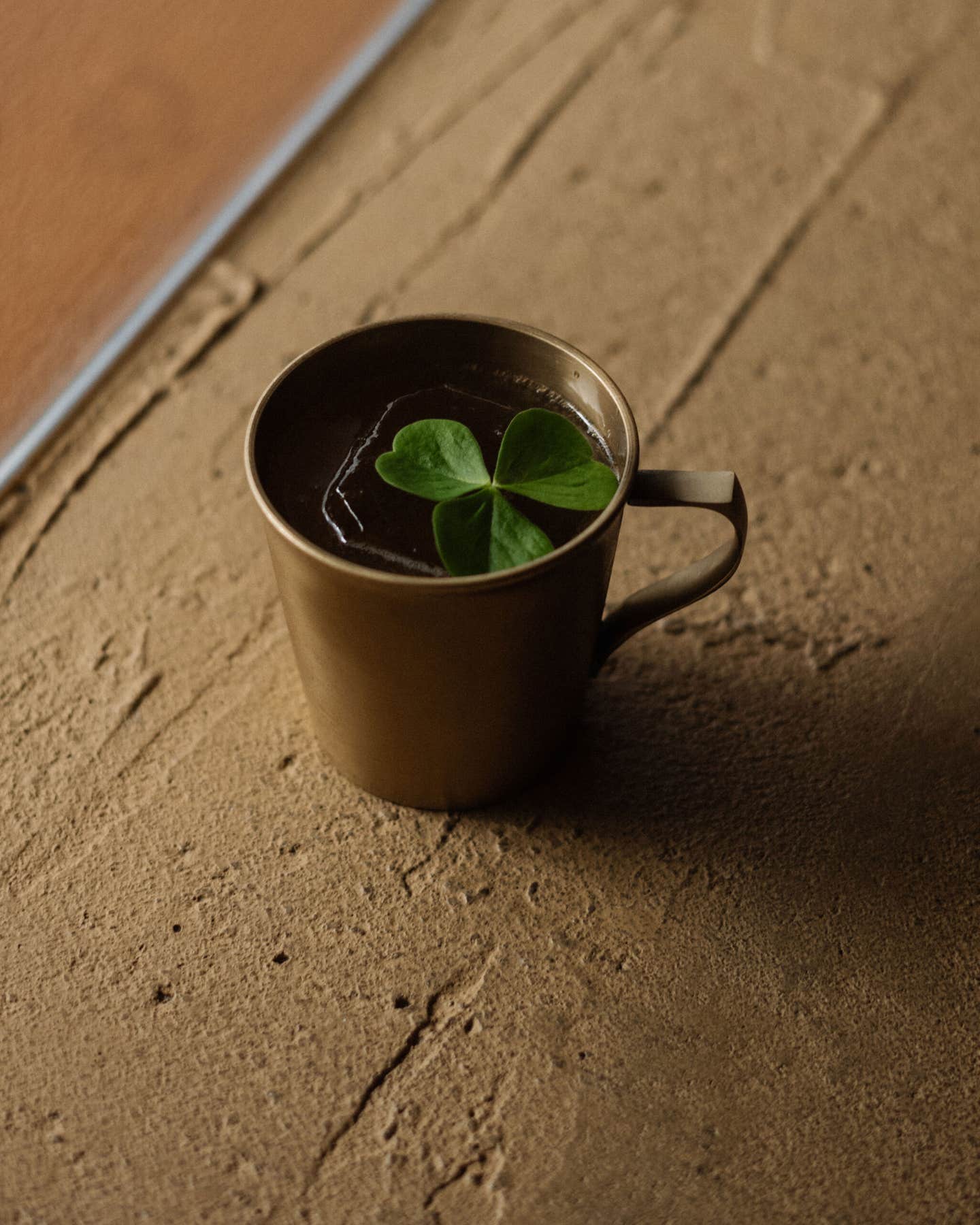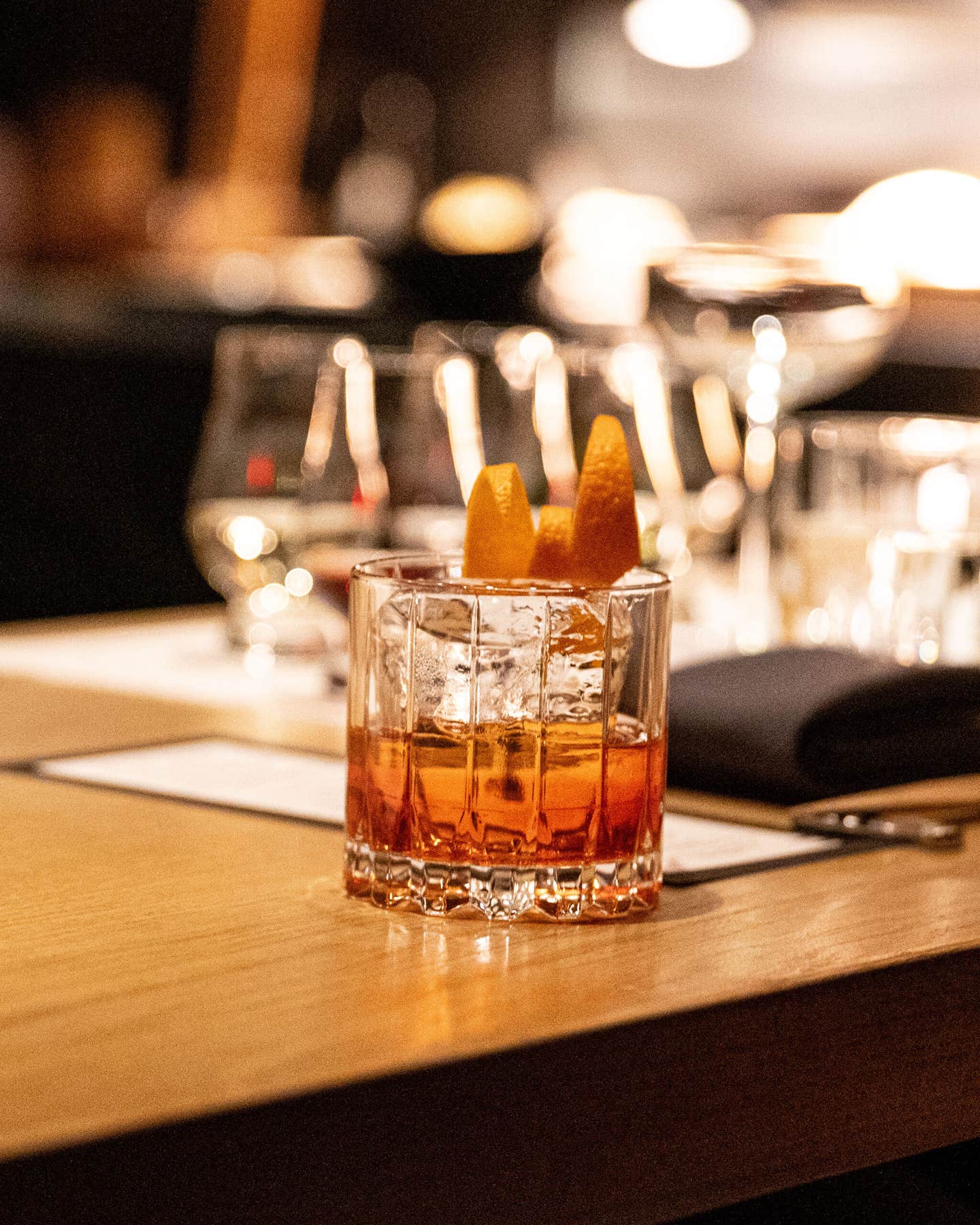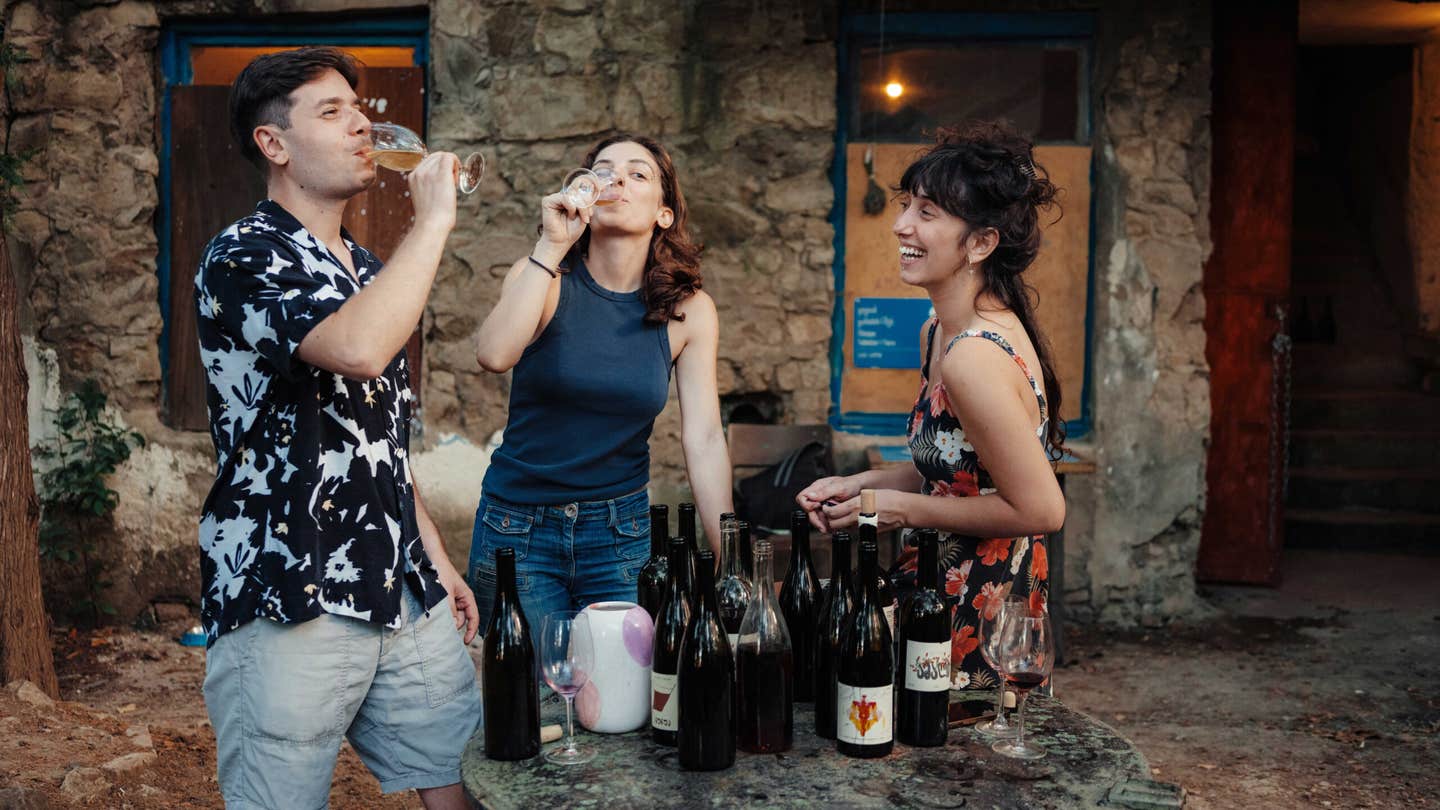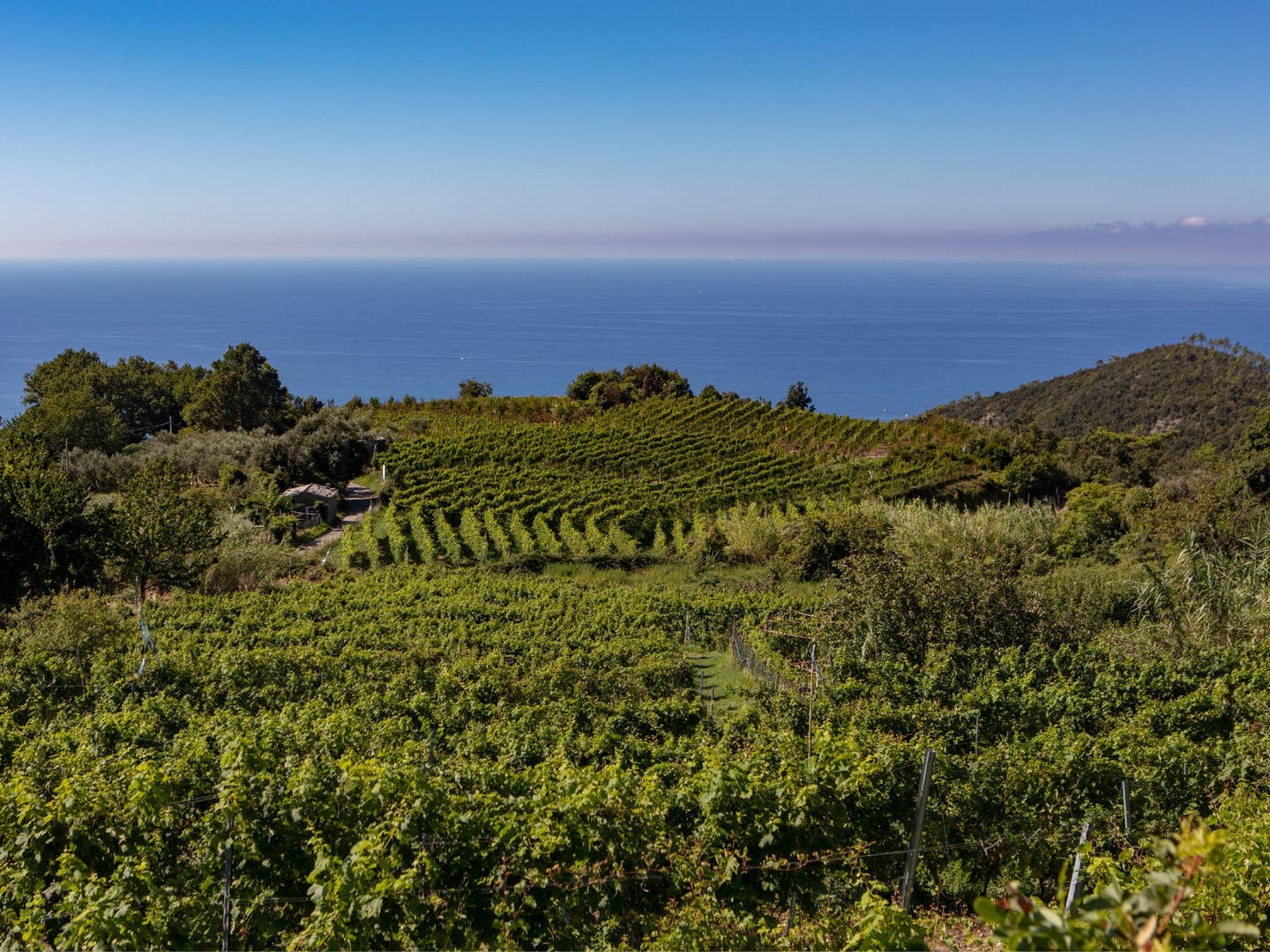
A Treacherous Terrain is at the Heart of Liguria’s Lush and Food-Friendly Wines
Cookbook author Laurel Evans on the growers and grapes to look out for.
In an excerpt from her new book, Liguria: The Cookbook: Recipes From the Italian Riviera, Laurel Evans introduces the Ligurian wines to look out for, their perfect pairings, and a few of the region’s most innovative winemakers.
Winemaking in Liguria is not for wimps. In fact, at some of the vineyards I’ve visited, this craft could be considered downright heroic. Most of the region is besieged by rugged, mountainous terrain: poor, rocky soil dominated by steep hillsides that often fall directly into the sea. However, despite the hardships and inhospitable landscape, Ligurians have been producing wine since the Etruscan and Roman eras.
Over the centuries, the rocky slopes have been carved into terraces, reinforced by hand-stacked, dry rock walls. These steep inclines are often entirely inaccessible to machinery, and harvesting must be done by hand, basket after basket of hard-won grapes carried out on strong shoulders.
Some vineyards are accessible only by boat. I visited the dizzying, mind-boggling vineyard of A Trincea, perched on a treacherous mountaintop in the farthest corner of Liguria, a stone’s throw from the French border. Hundreds of rock walls line the painstakingly terraced slopes, and 35,000 grapevines thrive on the precipitous rows; I was stunned by the back-breaking landscape and humbled by the testament to the will of humans to make wine.
“Paradoxically, Liguria’s problematic terrain is also what makes its winemaking possible. The plunging hillsides protect seaside vineyards from cold northern winds and expose the grapes to the warm sea breeze and mild climate, resulting in unique and delicious wines.”
Paradoxically, Liguria’s problematic terrain is also what makes its winemaking possible. The plunging hillsides protect seaside vineyards from cold northern winds and expose the grapes to the warm sea breeze and mild climate, resulting in unique and delicious wines. I have been most impressed by the young winemakers I met on my travels. A new generation is taking over their ancestors’ vineyards, transforming unremarkable family wines into new, unexpected products, and experimenting with organic and natural winemaking techniques.
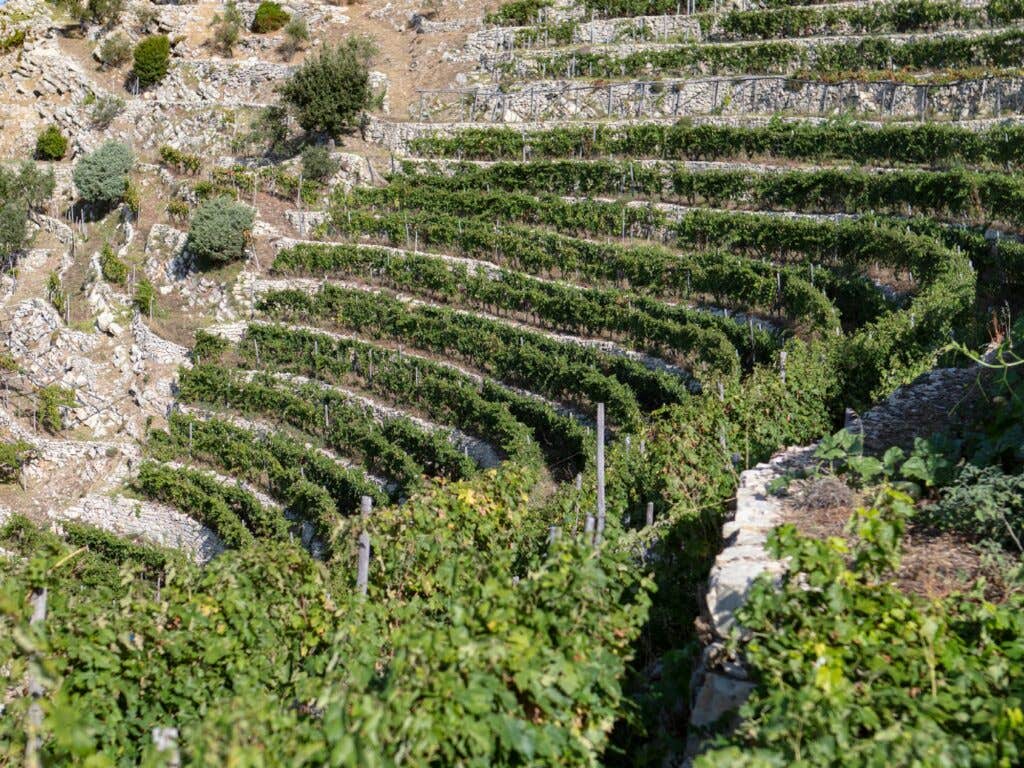
Davide Zoppi, for instance, left his sleepy, seaside town of Bonassola to pursue a law degree and subsequent career in Milan. There he met his future husband, Giuseppe, a marketing-savvy manager of a multinational corporation. After ten years in the bustling city, they made the radical move back to Bonassola to take over Davide’s family wine business, Ca du Ferra. “I’m sick of hearing about all the difficulties, this obsession locals have with the legend of hard work. I want my wines to be youthful and glamorous, to speak of the beauty of Liguria, not only of its struggles,” he told me as we sipped a cold glass of Luccicante, Ca du Ferra’s vibrant, almost salty vermentino, on a hot August day in the hills above Bonassola. Together, Davide and Giuseppe reinvented the business. They implemented organic, sustainable viticulture and natural winemaking techniques, launched a slick marketing campaign, resurrected abandoned vineyards in the area, and began cultivating ancient and rare grape varieties.
They are not alone. I also visited Gilda and Edoardo, the young brother and sister team behind Il Torchio, who produce natural wines in Castelnuovo Magra. They, too, were on entirely different career paths when they heeded the call to take over their grandfather’s vineyard and transform it into something fresh and new. “Wine is a living thing, it must change, just like you and I change,” Gilda smiled, “it must evolve with the times.”
“Of course, innovation is not proprietary of the young. Piero Lugano of Bisson was in his sixties when he first began to age his wine under water.”
Of course, innovation is not proprietary of the young. Piero Lugano of Bisson was in his sixties when he first began to age his wine under water. He produces his sparkling wine with the classic method, then lowers them onto the Mediterranean seabed in metal cages, where they age beneath the waves for thirteen to twenty-six months. He named the resulting, unique sparkling white wine Abissi, or “abyss.”
Not surprisingly, Liguria is not one of Italy’s most prolific wine regions; it’s actually amongst the least productive. However, its wines are worth seeking out as they are delicious, charming, and pair beautifully with the recipes from the region. The most common local wine grape is vermentino, which flourishes in every corner of the Italian Riviera. It’s not a particularly high maintenance plant and thrives on sun and sea air. “The sun, the wind, and the untamable stone are the main characteristics of a deeply Ligurian wine,” mused Davide, swirling his glass and squinting into the sun, “and when you take a sip, you should sense the hillsides plunging into the sea, you should feel like you’re jumping into the waves.”
Some Ligurian wines to try:
White Wine
Vermentino: This is the most common wine in Liguria. I spend my summers drinking Vermentino del Golfo del Tigullio, which is grown and produced in the area around our summer home in Moneglia, and also includes the famous wines of Portofino. Vermentino dei Colli di Luni is also wildly popular in the area. Persistent, fruity, and dry, Vermentino pairs well with appetizers, seafood, and nuts. Try serving it with fritto misto.
Pigato: The pigato grape grows almost exclusively in Ponente, the western part of Liguria, where I recommend trying a Pigato di Riviera Ligure di Ponente. Considered to be more refined and elegant than vermentino, this lightly fragrant wine has delicate notes of aromatic herbs and goes well with savory vegetable tarts, seafood dishes, and pesto.
Bianchetta Genovese: Produced in Val Polcevera, the valley and hills surrounding Genoa, this is the classic wine of the longshoremen and sailors who frequented the city’s port. It is a simple, straightforward, and extremely drinkable white whose famous pairing is, naturally, a crisp slice of Genovese focaccia. It also makes a great aperitivo.
Colline di Levanto Bianco: This delightful white is produced in the province of La Spezia between Levanto, Bonassola, and Framura. Native grape varieties, bosco and albarola are blended with vermentino to create a dry, slightly briny, well balanced wine that pairs beautifully with vegetarian dishes and seafood.
Red Wine
Rossese di Dolceacqua: Made exclusively with the rossese grape, this flavorful, full-bodied red pairs well with rabbit, meat, and mushroom dishes and was a favorite of both Napoleon and Pope Paul III. Try serving it with the region’s classic, homestyle stew, Coniglio alla Ligure.
Ormeasco di Pornassio: The ormeasco grape was imported to Liguria from Piedmont around the 1300s and belongs to the same family as dolcetto. It has a ruby red color, dry, warm flavor, and notes of ripe red fruit, and pairs nicely with meat ravioli.
Colli di Luni Rosso: This wine reflects its geographical proximity to Tuscany and is made with a blend of sangiovese (Tuscany’s principal red wine grape) and Ligurian ciliegiolo. This ruby-colored, fragrant, light, and balanced red goes beautifully with ravioli and meat dishes.
Dessert Wine
Cinque Terre Sciacchetrà: Pronounced “shah-keh-trah,” this sweet raisin wine is as fun to say as it is to drink. Sciacchetra is one of the most famous and exquisite wines of Liguria and is also under the protection of Slow Food. Made from bosco, albarola, and vermentino grapes, that are left to dry naturally for two months on racks, then crushed, the wine is then aged in small oak barrels for one year. The fresh notes of dried fruit and aromatic herbs pair well with aged cheese and pandolce genovese.
Recipe
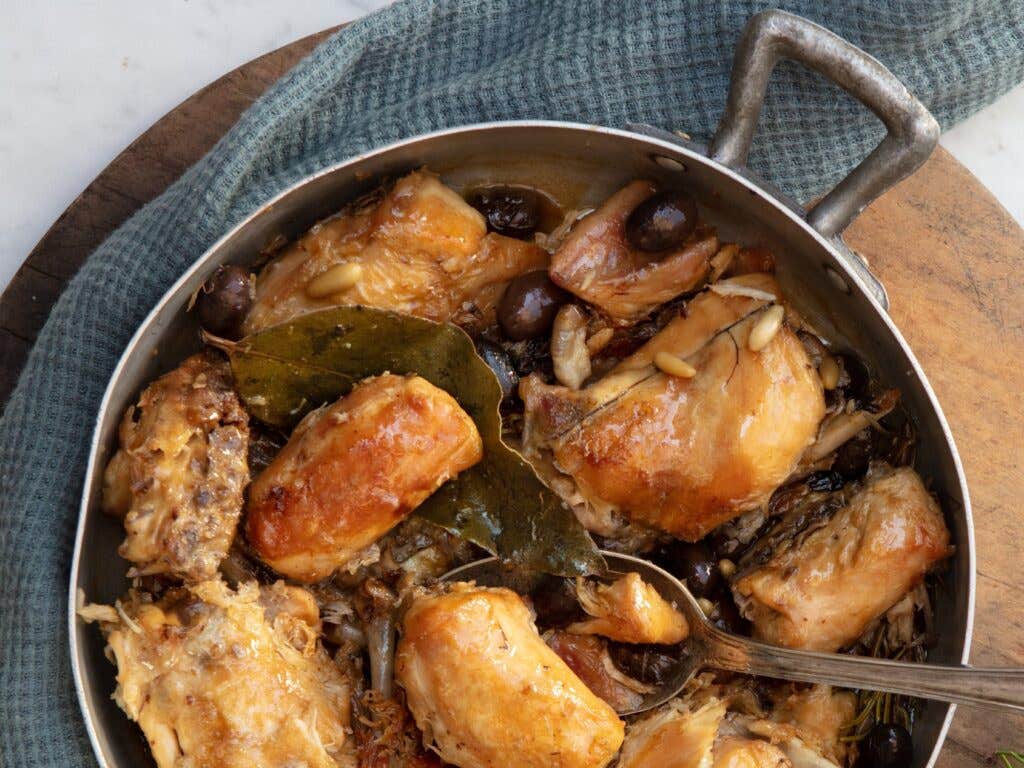
Keep Reading
Continue to Next Story







